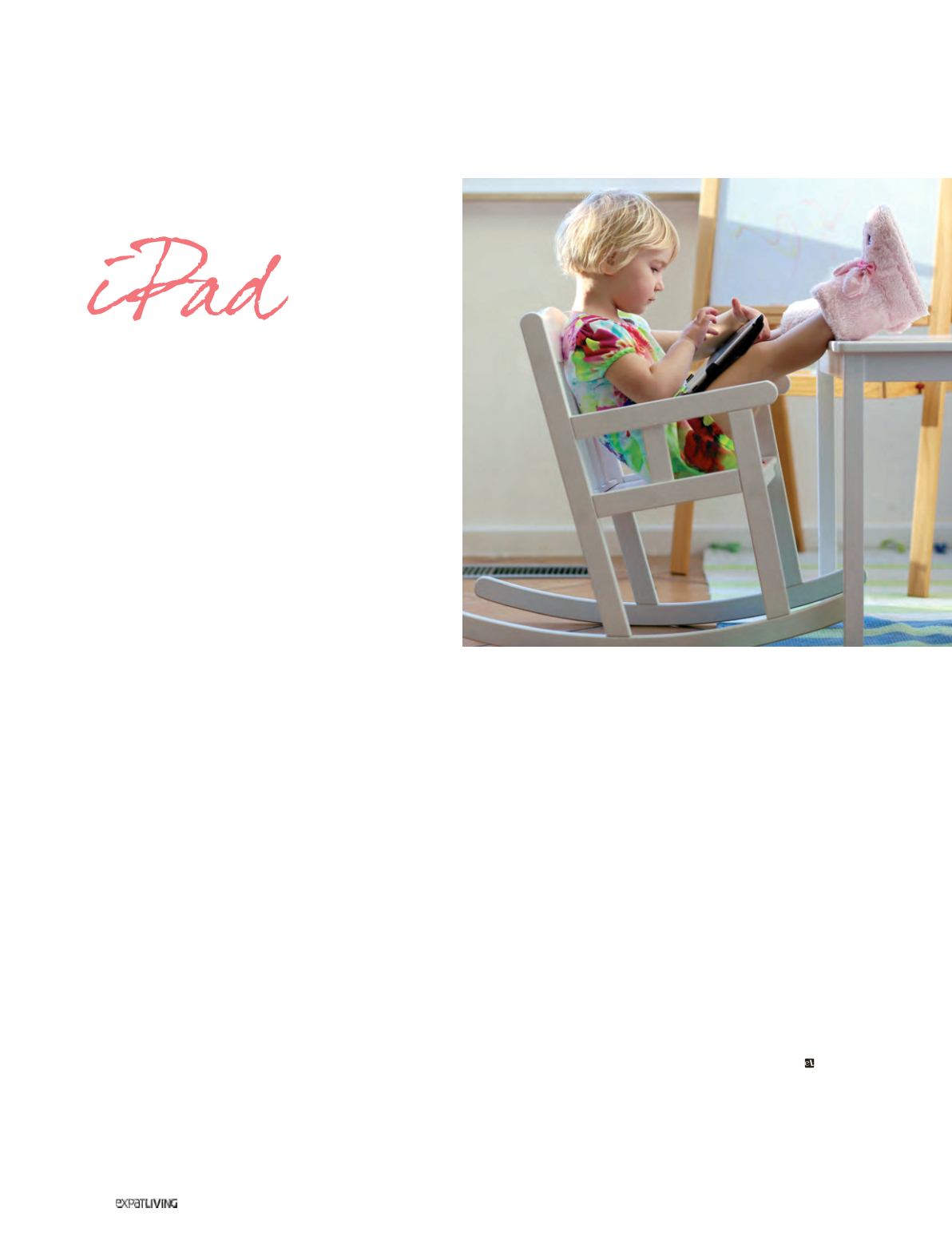

LIFE&FAMILY
130
February15
Pass me the
By Katie Roberts
Largely non-existent until 2007, smartphones
and tablets are now firmly enmeshed in our lives.
As pacifiers, educators and entertainers, these
devices take the weight off parents of children
under five, but we’re in relatively uncharted waters
regarding the short- and long-term consequences.
What are the issues to be aware of? ANDREW
MOWAT, Director of Information, Communication
and Technology at the Australian International
School, and father of three grown daughters, gave
Expat Living
his tips for the use of this technology
by children under five.
1. When a device is passed to a child, there is a purpose.
At opportune times a child can be given the device with a
short introduction. This can include why they are being shown
the device, what can be done with it and a usage time frame.
Regular, purposeful and structured engagement sets up good
habits. However, there is a place for game-playing, pacification
and relaxation, so this does not have to be done every time.
2. Having balance and variation is important.
There are
times when technology can play a role, but real-world play
is equally important. I would be concerned if a child was
spending a large amount of time on devices. For both adults
and children, technology can get in the way, especially before
bedtime: blue screens stimulate the brain – not useful for
winding down.
3. Technology is a
tool
for play and enquiry-based
learning.
Kids may start school seeing the device as
“something to keep me quiet”, but there is a gradual transition
at school where they begin to understand it is a learning
device, not a play device. Not only can selected apps assist
with developing structured thinking, expression and fine motor
skills, but preschoolers are now learning analogue coding, a
key skill for the future and the foundation for digital coding.
4. Write an essential agreement.
Setting age-appropriate
boundaries makes device usage easier to manage for children
and parents too, and lays a useful foundation for later years.
Parents of teenagers now are struggling with where, and how,
devices are used, because they have unfortunately not laid
the groundwork.
Australian International School
1 Lorong Chuan
6653 2956 | ais.edu.sg
An essential agreement involves literally sitting down with a
child from about age three and explaining what, how, when
and where the device can be used, and the consequences
if there is a problem. This is a clear framework that everyone
understands and agrees to upfront, and it needs to be followed
consistently.
The idea can be simplified for children under three, who
have no idea of time, with limits explained calmly in concrete
terms. Of course there are times when it is impossible and
only a device can pacify a screaming child, especially if it
means driving safely!
5. Set up good habits.
The precursors for future problems
are laid in the under-fives. It is critical to frame awareness in
the child that there are limits, and that there are other activities
aside from playing on devices, on demand. However, the self-
management and self-awareness parts of brain development
don’t kick in until around eight to ten years. For the under-fives,
the goals are to learn to manage the device, and become
accustomed to communicating with parents. This lays a path
for open discussion as their technology choices change as
they get older, and eventually transition into social media.



















